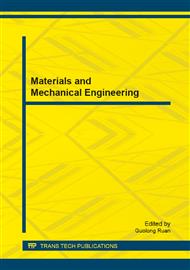p.168
p.175
p.181
p.185
p.191
p.201
p.210
p.217
p.222
Prediction of Cutting Temperatures in Milling Stainless Steels Using Sharp Worn Tools
Abstract:
The main purpose of this paper is to predict the tip's surface temperature of milling stainless steel using chamfered main cutting sharp worn tools. The cutting temperature model incorporating tool wear factor and using the variations of shear and friction plane areas occurring in tool worn situations are presented in this paper. The heat generate on elementary cutting tools are calculated by using the frictional cutting forces. Comparing the experimental forces measured by the dynamometer, that is good agreement. The carbide tip’s temperature calculates by loading the friction forces and tip’s parameters and the temperature distribution are solved by finite element analysis method.
Info:
Periodical:
Pages:
191-198
Citation:
Online since:
February 2014
Authors:
Price:
Сopyright:
© 2014 Trans Tech Publications Ltd. All Rights Reserved
Share:
Citation:


